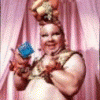New shoes for the Suburban
-
Similar Content
-
- 0 replies
- 7,461 views
-
Breaking news!!
By Tonik,
- 0 replies
- 5,842 views
-
- 4 replies
- 4,359 views
-
New record!
By Casper,
- 15 replies
- 4,477 views
-
- 9 replies
- 3,465 views
-






Recommended Posts
Join the conversation
You can post now and register later. If you have an account, sign in now to post with your account.